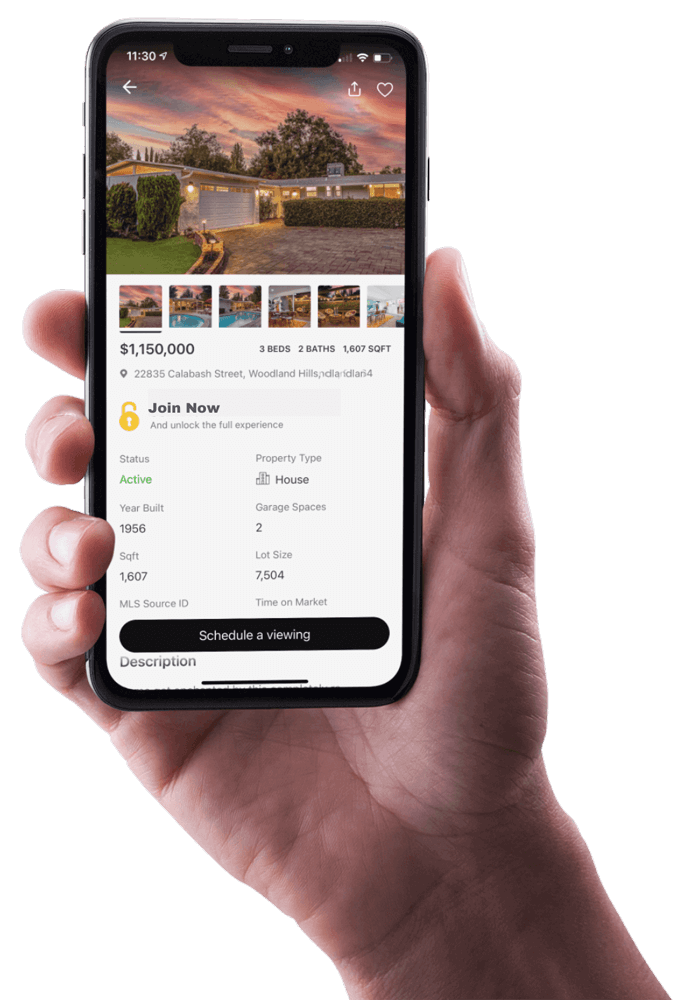
With mortgage rates hitting their lowest levels since mid-April 2023, many homeowners are left wondering whether now is the right time to refinance their mortgage loans. In this article, we explore key considerations and strategies for evaluating your refinancing options in light of recent market changes.
Introduction to Current Mortgage Rates
Mortgage rates have recently plunged to their lowest levels since April of last year. This significant drop has many homeowners considering whether now is the right time to refinance their mortgage loans. With the average 30-year fixed mortgage rate hovering around 6.4% for those with excellent credit, it's crucial to understand what these changes mean for you. Evaluating the current rates can provide you with the opportunity to save money, but it requires careful consideration of several factors.
Understanding the current mortgage rate environment is essential. Rates have decreased by about 75 basis points in just the past month. This trend presents an opportune moment for those who previously locked in higher rates. Whether you have a fixed-rate mortgage, an adjustable-rate mortgage, or even other debts like a home equity line of credit (HELOC) or credit card balances, this could be an excellent time to explore refinancing options. But before making any decisions, it's important to assess your unique financial situation and goals.
Understanding Your Financial Goals
When contemplating refinancing, the first step is to outline your financial objectives. Your goals will dictate whether refinancing is the right move for you. If you plan to sell your property within the next one to two years, refinancing might not be beneficial unless it can be done at no cost and offers immediate savings. Conversely, if you intend to stay in your home for a longer period, refinancing could provide substantial long-term benefits.
Short-Term vs. Long-Term Goals
Short-term goals typically focus on immediate financial relief, such as lowering monthly payments or paying off high-interest debt. Long-term goals might include reducing the overall interest paid over the life of the loan or securing a more stable fixed rate. Identifying your priorities will help you determine the best refinancing strategy.
It's also important to consider your time frame for achieving these goals. Evaluate how long it will take to recoup the costs associated with refinancing and how this aligns with your plans. This analysis will provide a clearer picture of whether refinancing aligns with your financial objectives.
Evaluating Your Current Loan Situation
Before deciding to refinance, you need to thoroughly evaluate your current loan situation. This involves understanding your existing mortgage terms, interest rate, and any other associated debts. For example, if you have a small first loan with a low interest rate but a larger second loan or HELOC with a much higher rate, your overall cost of borrowing might be higher than you realize.
Calculating Your Blended Rate
If you have multiple loans, you need to calculate your blended interest rate. This is the combined rate of all your loans, which provides a more accurate picture of your total borrowing costs. Tools and calculators are available to help you determine this rate, which is crucial for making an informed decision about refinancing.
Once you know your blended rate, you can compare it to current mortgage rates and evaluate the potential savings. Consider both cost and no-cost refinancing options, and assess how the closing costs will impact your overall savings. Closing costs can often be rolled into the new loan, but it's important to understand how this will affect your break-even point and long-term savings.
By carefully evaluating your current loan situation and understanding your financial goals, you can make a more informed decision about whether refinancing is the right choice for you.
Cost vs. No Cost Refinancing Options
When considering refinancing, one of the key decisions you'll need to make is whether to opt for a cost or no-cost refinancing option. Each choice has its advantages and drawbacks, and your decision should align with your financial goals and circumstances.
Understanding Cost Refinancing
Cost refinancing involves paying the closing costs upfront or rolling them into the new loan amount. These costs include fees for appraisals, title insurance, and origination points. Paying these costs upfront can help secure a lower interest rate, which may result in significant long-term savings.
For example, if the closing costs are $10,000 and your current loan balance is $300,000, you could either pay the $10,000 out-of-pocket or add it to your new loan balance, making it $310,000. This option often makes sense if you plan to stay in your home for an extended period and want to maximize your interest savings over the life of the loan.
Exploring No-Cost Refinancing
No-cost refinancing means the lender covers the closing costs, but in exchange, you’ll receive a slightly higher interest rate. This option can be beneficial if you don't have the cash on hand to pay upfront fees or if you plan to sell your home or refinance again in the near future.
For instance, with no-cost refinancing, if your original loan balance is $300,000, your new loan balance would remain $300,000. The lender absorbs the closing costs, but you'll end up with a higher interest rate, which means higher monthly payments compared to a cost refinancing option.
Choosing between cost and no-cost refinancing depends on your financial situation and goals. Evaluate the impact on your monthly payments and long-term savings to make an informed decision.
Calculating Break Even Points
Understanding your break-even point is crucial when deciding whether to refinance. The break-even point is when the savings from your new, lower monthly payments offset the costs of refinancing. This calculation helps determine if refinancing is a financially sound decision.
Simple Break-Even Calculation
To calculate the break-even point, divide the total closing costs by the monthly savings. For example, if your closing costs are $10,000 and your new mortgage saves you $1,000 per month, your break-even point would be 10 months. This means it would take 10 months to recover the costs of refinancing, and after that, you'll start saving money.
Factors Affecting Break Even Points
The break-even point can vary based on several factors:
- Loan Term: A longer loan term may result in lower monthly payments, but it could extend the break-even point.
- Interest Rate: A lower interest rate can shorten the break-even period by increasing your monthly savings.
- Upfront Costs: Higher closing costs will extend the break-even point, while lower costs will shorten it.
Consider your time horizon when evaluating the break-even point. If you plan to stay in your home for a long time, a longer break-even period may be acceptable. However, if you anticipate moving within a few years, a shorter break-even point is essential to ensure you benefit from the refinancing.
Example Scenarios
Let's look at two scenarios:
- Short-Term Horizon: If your closing costs are $10,000 and you save $100 per month, your break-even point is 100 months or over eight years. This may not be worth it if you plan to move within a few years.
- Long-Term Horizon: If your closing costs are $5,000 and you save $200 per month, your break-even point is 25 months. This is more attractive if you plan to stay in your home for several years.
Calculating your break-even point helps you understand the financial impact of refinancing and ensures it aligns with your long-term goals.
The Importance of Choosing the Right Lender
Selecting the right lender is a critical step in the refinancing process. The right lender can offer competitive rates, flexible terms, and excellent customer service, making your refinancing experience smoother and more beneficial.
Factors to Consider When Choosing a Lender
When evaluating potential lenders, consider the following factors:
- Interest Rates: Compare interest rates from multiple lenders to find the best deal. Even a small difference in rates can result in significant savings over the life of the loan.
- Fees and Costs: Review the closing costs and fees associated with each lender. Some lenders may offer lower rates but higher fees, so it's essential to look at the overall cost.
- Loan Options: Ensure the lender offers the type of loan that meets your needs, whether it's a fixed-rate mortgage, an adjustable-rate mortgage, or a specialized loan program.
- Customer Service: Read reviews and ask for recommendations to gauge the lender's reputation for customer service. A lender who communicates clearly and promptly can make the refinancing process much less stressful.
Benefits of Using a Mortgage Broker
A mortgage broker can be a valuable resource when refinancing. Brokers work with multiple lenders and can help you find the best rates and terms for your situation. They can also assist with the application process, saving you time and effort.
Using a broker offers several advantages:
- One Application: Submit one loan application, and the broker will shop around for the best rates and terms on your behalf.
- Credit Impact: A broker only pulls your credit once, which can be beneficial for maintaining your credit score.
- Flexibility: Brokers can switch lenders mid-process if a better deal becomes available, ensuring you get the best possible terms.
Trust and Experience Matter
Working with a reputable and experienced lender or broker is crucial. They should take the time to understand your financial goals and provide personalized advice. Avoid lenders who pressure you into decisions or don't explain the terms and conditions clearly.
In conclusion, choosing the right lender can significantly impact your refinancing experience and outcomes. Take the time to research and compare options, and consider working with a mortgage broker to navigate the process more efficiently. By doing so, you'll be better positioned to achieve your financial goals and make the most of the current low mortgage rates.
Conclusion: Making the Right Decision
Deciding whether to refinance your mortgage is a significant financial decision that requires careful consideration of various factors. With the recent plunge in mortgage rates, it's an opportune moment to evaluate your options and potentially save money on your mortgage payments. However, refinancing isn't a one-size-fits-all solution, and it's essential to align your decision with your financial goals and current loan situation.
Weighing the Pros and Cons
Before making a refinancing decision, weigh the pros and cons. Consider the potential savings in monthly payments and long-term interest against the costs of refinancing, such as closing fees and appraisal costs. If you plan to stay in your home for a considerable period, the benefits of refinancing may outweigh the costs. Conversely, if you might move in the next few years, the upfront costs may not justify the short-term savings.
Utilize Available Resources
Take advantage of the resources available to you, such as mortgage brokers and online calculators, to get a clear picture of your potential savings and costs. A mortgage broker can shop around for the best rates and terms, saving you time and effort. Online calculators can help you determine your blended rate, break-even point, and overall savings, providing a more accurate basis for your decision.
Consult with Experts
Consulting with mortgage experts, like those at Revest Homes, can provide personalized advice tailored to your unique financial situation. They can help you navigate the complexities of refinancing, from understanding your current loan terms to evaluating the best refinancing options available. With their expertise, you can make an informed decision that aligns with your financial goals and maximizes your savings.
Take Action
If you've determined that refinancing is the right move for you, take action promptly. The current low mortgage rates may not last forever, and acting quickly can help you lock in the best rates and terms. Reach out to lenders, gather quotes, and compare your options to ensure you make the most informed decision possible.
In conclusion, refinancing your mortgage can offer significant financial benefits, especially with the recent drop in rates. By carefully evaluating your financial goals, current loan situation, and available options, you can make a well-informed decision that enhances your financial stability and savings. Take the time to research, consult with experts, and act promptly to make the most of this golden opportunity.
Posted by Kristopher Larson
Related Articles:
- Window Treatment Ideas That Can Boost Your Homes Worth
- A Frame Homes For Sale In Utah
- Modern Outdoor Lighting Types That Can Boost Your Homes Value
- Effective Leasing Strategies For Multi Family Rental Units
- Condo Living Vs Traditional Homeownership
- Navigating The Crossroads Of Rental Property Investment Buy More Or Pay Off Debt
- How To Plan Your Down Payment Savings As A Single Homeowner
- Does Your Lawn Affect Your Property Value
- Should Landlords Allow Tenants To Make Home Improvements
- How To Do A 1031 Exchange On Your Primary Residence
- What Buyers Need To Know About Agent Commissions
- Why Smart Buyers Choose Homes With Investment Potential








